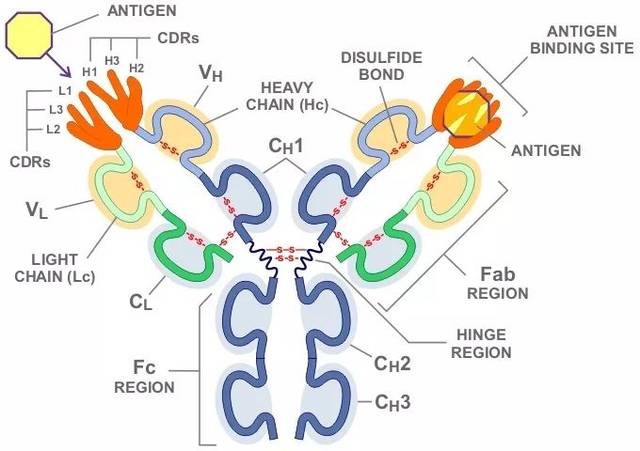Product Name :
EDG-5 (L303) polyclonal antibody Background :
The EDG (endothelial differentiation gene) family of G protein-coupled receptors consists of eight family members that bind lysophospholipid (LPL) mediators, including sphingosine-1-phosphate (SPP) and lysophosphatidic acid (LPA). EDG-1, EDG-3, EDG-5 (also designated H218 and AGR16) and EDG-8 bind SPP with high-affinity. EDG-6 is a low-affinity receptor for SPP. LPA preferentially binds to EDG-2, EDG-4 and EDG-7. The EDG receptors couple to multiple G proteins to signal through Ras, MAP kinase, Rho, Phospholipase C or other tyrosine kinases, which lead to cell survival, growth, migration and differentiation. EDG-1 signals through Gi proteins to activate Akt and is expressed in glioma cells. EDG-2 is expressed in brain, especially in white matter tract regions, while EDG-3 is expressed in cardiovascular tissue and in cerebellum. EDG-4 is highly expressed on leukocytes and brain. EDG-5 has wide tissue distribution, including cardiovascular tissue and brain. Expressed in lymphoid and hematopoietic tissues and in lung, EDG-6 signals through Gi/o proteins, which activate growth related pathways. Product :
Rabbit IgG, 1mg/ml in PBS with 0.02% sodium azide, 50% glycerol, pH7.2 Storage&Stability :
Store at 4°C short term. Aliquot and store at -20°C long term. Avoid freeze-thaw cycles. Specificity :
EDG-5 (L303) polyclonal antibody detects endogenous levels of EDG-5 protein. Immunogen :
Synthetic peptide, corresponding to amino acids 281-330 of Human EDG-5. Conjugate :
Unconjugated Modification :
Unmodification
EDG-5 (L303) polyclonal antibody Background :
The EDG (endothelial differentiation gene) family of G protein-coupled receptors consists of eight family members that bind lysophospholipid (LPL) mediators, including sphingosine-1-phosphate (SPP) and lysophosphatidic acid (LPA). EDG-1, EDG-3, EDG-5 (also designated H218 and AGR16) and EDG-8 bind SPP with high-affinity. EDG-6 is a low-affinity receptor for SPP. LPA preferentially binds to EDG-2, EDG-4 and EDG-7. The EDG receptors couple to multiple G proteins to signal through Ras, MAP kinase, Rho, Phospholipase C or other tyrosine kinases, which lead to cell survival, growth, migration and differentiation. EDG-1 signals through Gi proteins to activate Akt and is expressed in glioma cells. EDG-2 is expressed in brain, especially in white matter tract regions, while EDG-3 is expressed in cardiovascular tissue and in cerebellum. EDG-4 is highly expressed on leukocytes and brain. EDG-5 has wide tissue distribution, including cardiovascular tissue and brain. Expressed in lymphoid and hematopoietic tissues and in lung, EDG-6 signals through Gi/o proteins, which activate growth related pathways. Product :
Rabbit IgG, 1mg/ml in PBS with 0.02% sodium azide, 50% glycerol, pH7.2 Storage&Stability :
Store at 4°C short term. Aliquot and store at -20°C long term. Avoid freeze-thaw cycles. Specificity :
EDG-5 (L303) polyclonal antibody detects endogenous levels of EDG-5 protein. Immunogen :
Synthetic peptide, corresponding to amino acids 281-330 of Human EDG-5. Conjugate :
Unconjugated Modification :
Unmodification
-
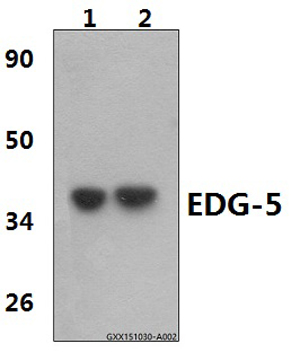
-
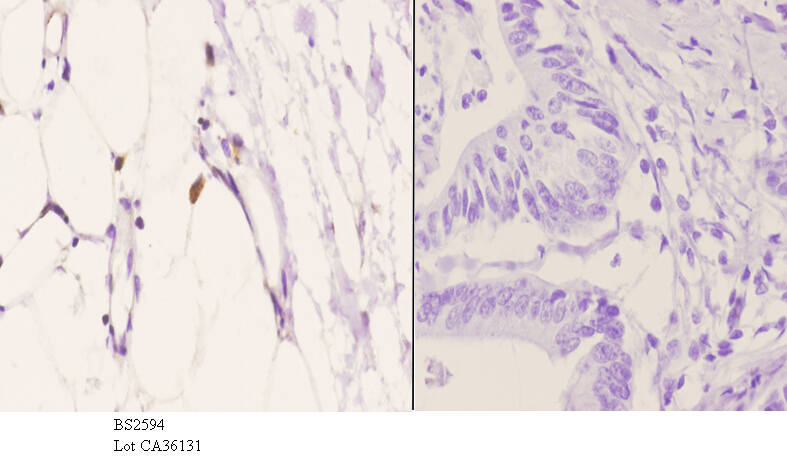 Immunohistochemistry (IHC) analyzes of EDG-5 (L303) pAb in paraffin-embedded human colon carcinoma tissue at 1:50.showing cytoplasmic and membrane staining. Negative control (the right)Using PBS instead of primary antibody, secondary antibody is Goat Anti-Rabbit IgG-biotin followed by avidin-peroxidase.
Immunohistochemistry (IHC) analyzes of EDG-5 (L303) pAb in paraffin-embedded human colon carcinoma tissue at 1:50.showing cytoplasmic and membrane staining. Negative control (the right)Using PBS instead of primary antibody, secondary antibody is Goat Anti-Rabbit IgG-biotin followed by avidin-peroxidase. -
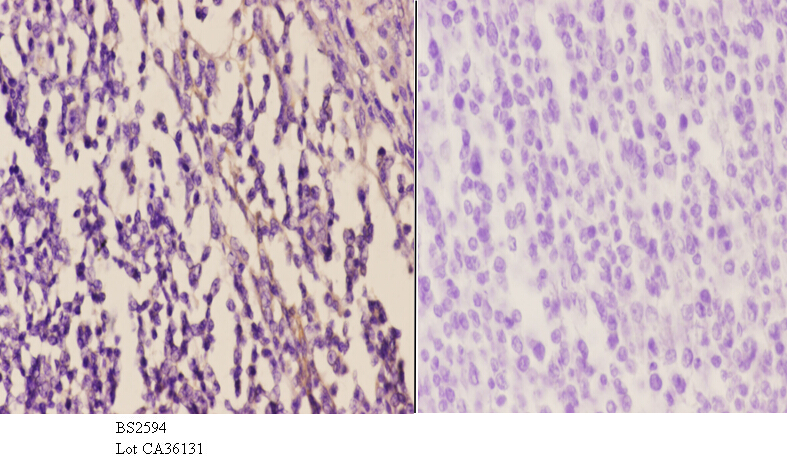 Immunohistochemistry (IHC) analyzes of EDG-5 (L303) pAb in paraffin-embedded human colon carcinoma tissue at 1:50.showing cytoplasmic and membrane staining. Negative control (the right)Using PBS instead of primary antibody, secondary antibody is Goat Anti-Rabbit IgG-biotin followed by avidin-peroxidase.
Immunohistochemistry (IHC) analyzes of EDG-5 (L303) pAb in paraffin-embedded human colon carcinoma tissue at 1:50.showing cytoplasmic and membrane staining. Negative control (the right)Using PBS instead of primary antibody, secondary antibody is Goat Anti-Rabbit IgG-biotin followed by avidin-peroxidase.
Berberine Reduces Fibronectin Expression by Suppressing the S1P-S1P2 Receptor Pathway in Experimental Diabetic Nephropathy Models
PMCID: Pubmed No.:22937115
Sphingosine-1-phosphate receptor 2 mediates endothelial cells dysfunction by PI3K-Akt pathway under high glucose condition
PMCID: Pubmed No.:26921757
Sphingosine-1-phosphate receptor 2 mediates endothelial cells dysfunction by PI3K-Akt pathway under high glucose condition
PMCID: Pubmed No.:26921757
Sphingosine‑1‑phosphate induces islet β‑cell proliferation and decreases cell apoptosis in high‑fat diet/streptozotocin diabetic mice
PMCID: Pubmed No.:31602216
Bioworld Biotech only provide peptides for our antibodies and do not provide additional peptide customization services.
Price/Size :
USD 368/1mg/vial
Tips:
For phospho antibody, we provide phospho peptide(0.5mg) and non-phospho peptide(0.5mg).Describe :
Blocking peptides are peptides that bind specifically to the target antibody and block antibody binding. These peptide usually contains the epitope recognized by the antibody. Antibodies bound to the blocking peptide no longer bind to the epitope on the target protein. This mechanism is useful when non-specific binding is an issue, for example, in Western blotting (WB) and Immunohistochemistry (IHC). By comparing the staining from the blocked antibody versus the antibody alone, one can see which staining is specific; Specific binding will be absent from the western blot or IHC performed with the neutralized antibody.Formula:
Synthetic peptide was lyophilized with 100% acetonitrile and is supplied as a powder. Reconstitute with 0.1 ml DI water for a final concentration of 10 mg/ml.The purity is >90%,tested by HPLC and MS.
Storage:
The freeze-dried powder is more stable. For short time at 2-8°C. For long term storage store at -20°C.
Note :
This product is for research use only (RUO only). Not for use in diagnostic or therapeutic procedures.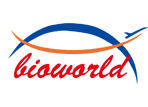
 EDG-5 (L303) polyclonal antibody
EDG-5 (L303) polyclonal antibody  Datasheet
Datasheet COA
COA MSDS
MSDS SHIP
SHIP